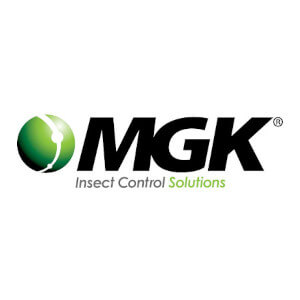In recognition of the invaluable impact the pest control industry has on our everyday lives and well-being, MGK is joining the National Pest Management Association (NPMA) in celebrating World Pest Day on June 6. This annual worldwide observance raises awareness about the important role that the pest control industry plays in protecting health, food, property and the environment from pest health threats.
Ants
I think ant colony behavior is fascinating. Adults of some species can’t consume solid foods—instead they bring it back to the colony to feed to the larvae. They will then “squeeze” the larva which results in the regurgitation of the food, which allows the adult to consume the now liquified food. So, if you see an ant carrying a piece of solid food, it is most likely heading back to the colony.
 Submitted by Correy Hildebrand
Submitted by Correy Hildebrand
Bed Bugs
Bed bugs are scared of water loss. The need to conserve water is why you find them in groups. When a cluster of bed bugs is all together in a small area, it increases the local relative humidity. They create a microenvironment so they can conserve water. Now that’s how you conquer your fears.
![]() Submitted by Tommy Powell
Submitted by Tommy Powell
Cattle Grubs
The cattle grub is a species of bot fly. Adults do not have functioning mouthparts and only live for a few days. Most of their life is spent in the larval or bot stage, in the tissues of the host cow. Cattle will sometimes panic (gadding) when female flies approach to lay eggs. With fully grown larvae approaching an inch long, who can blame them?

Submitted by Anna Hansen
Fleas
Fleas are small, but mighty! They can jump 150 times their body length and can pull 160,000 times their body weight! Fleas are known for spreading the plague that killed 1/3 of Europe in the 14th century, but they have been around for over 165 million years. That means they plagued the dinosaurs too (See what I did there? 😉) Those fleas were not able to jump but were 25 times the size they are now. Talk about trading size for power!
 Submitted by Christy E. Jones
Submitted by Christy E. Jones
Indianmeal Moths
Unlike most pest species you can’t simply “spray and pray” if you want to control indianmeal moths. The best way to get them under control, especially in large food processing or warehousing environments, is to use pheromone traps to quickly locate and remove infested items. Big data meets pest control.
![]() Submitted by Ryan Neff
Submitted by Ryan Neff
Mites
Some mites that are pests of your ornamental and greenhouse plants can hitch rides on whiteflies, another pest of your ornamentals and greenhouse plants to spread the population and damage further. TAXI! (if you don’t know what that is, it’s like an Uber or a Lyft, 😀 ) Talk about double damage!
![]() Submitted by Sandra Sleezer
Submitted by Sandra Sleezer
Mosquitoes
Mosquitoes suck! Not really, they actually feed via capillary action. Think of when you were a kid and the doctor pricked your finger and they used a small glass tube that filled with blood but there was no suction or pump. Same principle here, a liquid flowing in narrow spaces without external forces such as gravity or pumps.
![]() Submitted by JB Howell
Submitted by JB Howell

